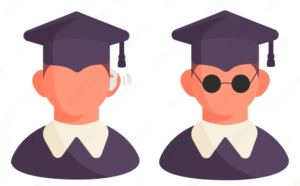
Deaf Blindness Adwait

Multiple Disabilities Including Deaf Blindness
Understanding Deafblindness: Challenges and Empowering Solutions
Deafblindness, a unique sensory disability, poses significant challenges to individuals who experience its profound impact on their lives. Combining the loss of both sight and hearing, deafblindness presents formidable hurdles to communication, independence, and social interaction. In this article, we delve into the world of deafblindness, exploring its causes, effects, and the empowering solutions that enhance the lives of individuals living with this condition.
Understanding Deaf Blindness:
Deafblindness refers to the condition in which an individual experiences varying degrees of both hearing and visual impairment. It is a spectrum disorder that manifests in different ways for each person affected. Some individuals may have partial hearing and sight loss, while others may be completely deaf and blind. The causes of deafblindness can be congenital, such as in the case of Usher syndrome, or acquired through illness, trauma, or age-related degeneration.
Challenges Faced by Individuals with Deaf Blindness:
Communication Barrier:
The most significant challenge faced by deafblind individuals is communication. Without access to spoken language and visual cues, conveying and receiving information becomes extremely difficult. Traditional communication methods, such as sign language or lip reading, may not be viable options for many individuals. This isolation often leads to reduced opportunities for education, employment, and social integration.
Independence and Mobility:
Deafblindness can greatly impact an individual’s mobility and independence. Without visual input, navigating the environment becomes challenging, and the absence of auditory cues hinders the ability to detect potential hazards or obstacles. This dependence on others for daily tasks and mobility restricts personal freedom and can lead to feelings of frustration and dependency.
Social Isolation:
Communication barriers and limited mobility often result in social isolation for individuals with deafblindness. Engaging in social activities, building relationships, and participating in community events can be extremely challenging without the necessary support and accommodations. This isolation can lead to mental health issues, including depression and anxiety.
Empowering Solutions:
Sensory Substitution and Augmentation:
Technological advancements have paved the way for innovative solutions to enhance the lives of individuals with deafblindness. Sensory substitution devices, such as haptic feedback systems and vibrotactile aids, can convert auditory and visual information into tactile sensations, allowing individuals to perceive and interpret their surroundings through touch.
Assistive Communication Technologies:
Various assistive communication technologies have been developed to bridge the communication gap for individuals with deafblindness. These include tactile sign language interpreters, Braille devices, and communication apps that facilitate text-based or touch-based communication.
Support Services and Training:
Comprehensive support services, including training programs and support staff, play a crucial role in empowering individuals with deafblindness. Rehabilitation services can provide training in orientation and mobility, adaptive skills, and assistive technology, enabling individuals to develop greater independence and autonomy.
Accessibility and Inclusion:
Society must work towards creating inclusive environments that cater to the needs of individuals with deafblindness. This includes implementing universal design principles in public spaces, providing accessible information in alternate formats (such as braille or tactile graphics), and fostering inclusive educational and employment opportunities.
Conclusion:
Deaf blindness presents unique challenges that require tailored solutions and support to enable individuals to lead fulfilling lives. Through the integration of innovative technologies, comprehensive support services, and a commitment to accessibility and inclusion, society can empower individuals with deafblindness to overcome barriers, maximize their potential, and actively participate in all aspects of life. By raising awareness and advocating for their rights, we can work towards creating a world that embraces diversity and ensures equal opportunities for all, regardless of their sensory abilities.
